As the bus pulled in by the harbour, we got down sleepily. The river in front of us lay dark and mysterious. A few lights from moored ships amplified the late night loneliness of the Rupsha river. We dizzily hauled ourselves onto an engine boat and the loud chug of the engine shattered the silence of the night. The lights dissolved and stirred in the waves. We saw the lights of the cruiser a little distance away. Its white lights burned furiously in the darkness. MV Vela, the words appeared on the white hull of the ship. The powerful engine of the ship hummed deeply as we neared it. The boat bumped and I could feel the unmistakable smell of a ship the smell of grease, engine oil, diesel, iron and food coming from the kitchen. This smell makes me nostalgic, a smell that takes me back to decades back. The ship was not very big, but it was spacious. I could see the rubber pulleys and pipes running through the engines in the gully. The generators working fulltime. Rows of cabins had run through the middle of the ship. We dumped our bags and equipment and we had a plentiful of them. Suitcase full of cameras and lenses. Well, when you travel with wildlife photographers, you are bound to face all these paraphernalia. A late night dinner was served on the rooftop and we were hungry. Under the open sky we sat around a long table and wolfed on the food simple rice, dal and chicken but delicious. As soon as the dishes were cleared, Khosru Chowdhury, the self-made tiger expert, unfurled a map of the Sundarbans and briefed us about where we would be in the next five days. We would cross nine rivers in those days and take a detour of the mysterious forest. In fact this is the unique feature of the Sundarbans countless rivers have crisscrossed it like the lines on an open palm, feeding the unique ecosystem of the forest.
But above everything else, we have a secret wish. There is a mysterious temple tucked deep into the forest built some 450 years ago. It was in fact, part of a township set up by Raja Protapadittya in 1558 to fight off the Borgi pyrates. The township is lost today, you can find some obscure traces of brick roads, and some brick dumps only. But the temple still stands there in the impregnable forest. And in this temple lives a tiger the temple tiger as we wished to call it following Jim Corbette's famous story of a mysterious temple tiger. We have a secret wish to go there and see this tiger in flesh. But only Khosru knows the way among us to the temple. The briefing over, we were tired but could not go to sleep. Reza Khan and Ronald Halder were talking about their amazing experiences in the wild. How they had spent days and nights in different forests. How they had run out of food and water and got almost lost in the wilderness at Hazarikhil forest. Their tales of watching rare reptiles and insects. By the time they finished, it was almost dawn. There was a gales glow of dawn in the sky and the air was blowing cool. I yawned and went down to my cabin. It took me a couple of minutes to fall asleep. I was sweating like a pig. I managed to open my eyes to the full glare of the morning and moaned. The heat was so oppressive that it was difficult to even breathe. I clambered out of the dingy cabin and climbed to the roof. The ship was cruising with a deep rumble. I squinted my eyes in the bright sun. We were now crossing Pashur river. Who said it was monsoon? Not a ball of cloud in the horizon and the sun beat down mercilessly.
As we had our breakfast, we huffed and puffed for a bit of wind, which was virtually absent now. As the day wore on, the unbearably heat and humidity left us lifeless. I remembered once Khosru told me how furious the mangrove monsoon could be. The river glinted back the sunlight with twice the intensity; the forests on both side looked stunted here and worn out too. It looked like a Sundarbans shredded and depleted by some force. Impact of Ailam the cyclone, said a Laskhkar of the ship. We had now entered the Sutarkhali river. It runs narrow and tranquil. A few fishermen in their rickety boats bobbed on the river, slowly pulling in the nets. We asked them what catch they had. Nothing much, they replied, just some small nondescript fish. This is not a good time for fishing, they shouted back.
Story: Inam Ahmed
©thedailystar.net 2009 |
|||||||||||||||||

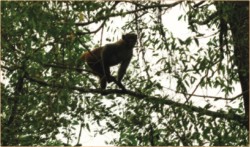
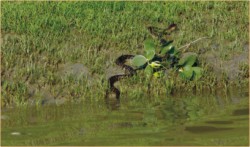
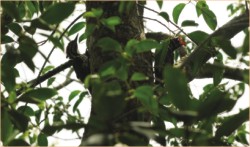
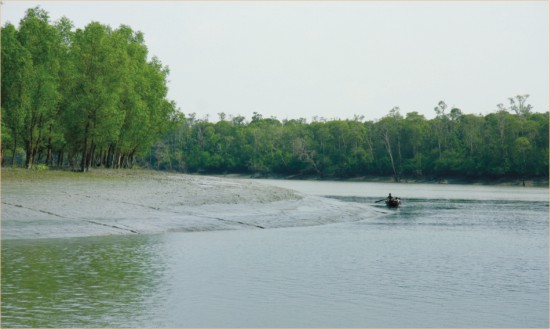
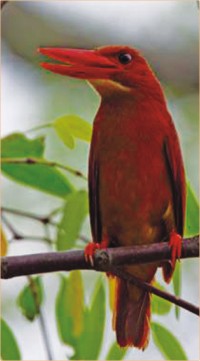
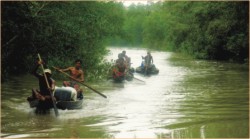
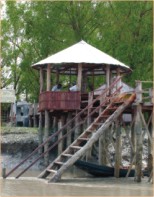 Monsoon is off-season for Sundarbans tourists. They come here in the winter and go to Kotka. But we chose monsoon for various reasons. First, it is not going to be a pleasure trip; we had come here with Dr Reza Khan, the zoologist, Ronald Halder and Siraj, the wildlife photographers, and Khosru to look for a bird Musk Fin Foot that has become rare in this part of the world. You get to see some in Indonesia, but nothing thereafter. Secondly, we want to enjoy the beauty of this majestic mangrove forest in monsoon when everything is so green. When the forest is both in its brooding mood and contrastingly in its full bloom with birds hatching eggs at a time when the forest is seething with worms and insects. We also had chosen a different route not accosted by tourists we would take the Pashur to slice through the West of the Sundarbans (Katka on the other hand lies on the east of the forest).
Monsoon is off-season for Sundarbans tourists. They come here in the winter and go to Kotka. But we chose monsoon for various reasons. First, it is not going to be a pleasure trip; we had come here with Dr Reza Khan, the zoologist, Ronald Halder and Siraj, the wildlife photographers, and Khosru to look for a bird Musk Fin Foot that has become rare in this part of the world. You get to see some in Indonesia, but nothing thereafter. Secondly, we want to enjoy the beauty of this majestic mangrove forest in monsoon when everything is so green. When the forest is both in its brooding mood and contrastingly in its full bloom with birds hatching eggs at a time when the forest is seething with worms and insects. We also had chosen a different route not accosted by tourists we would take the Pashur to slice through the West of the Sundarbans (Katka on the other hand lies on the east of the forest). 